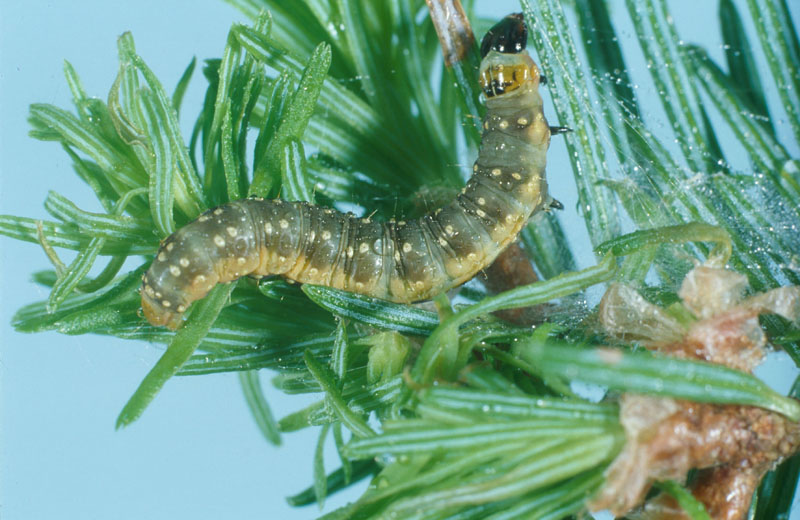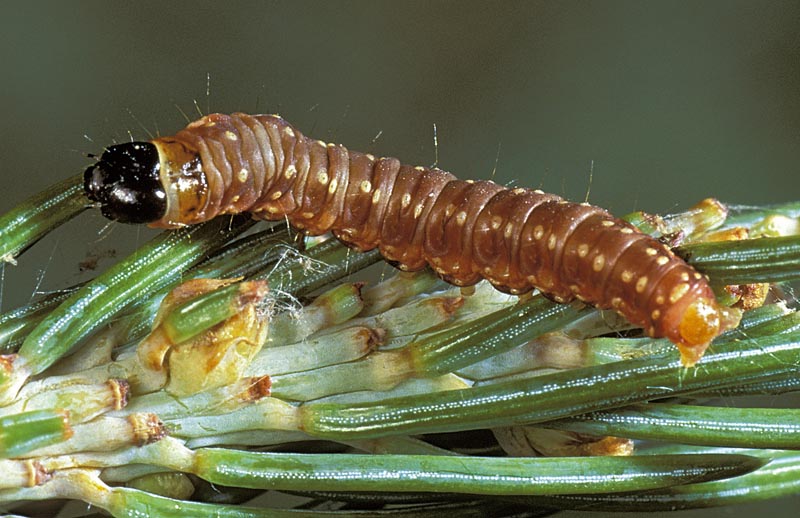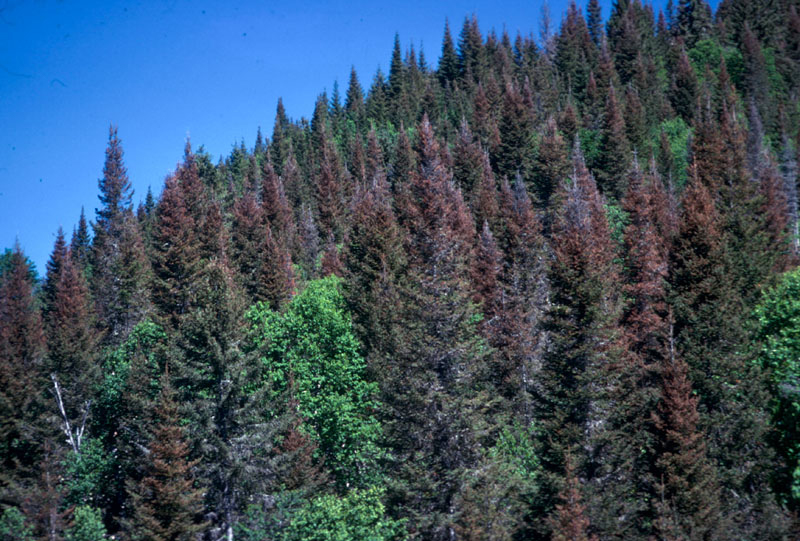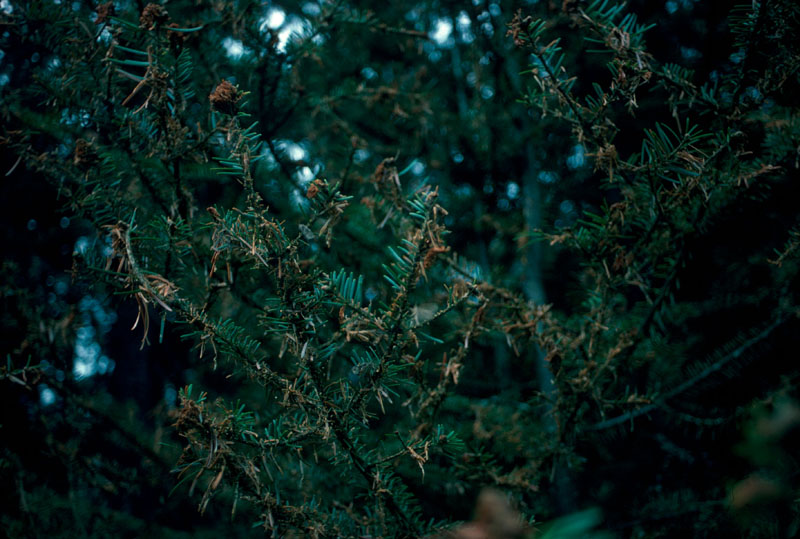Spruce Budworm
Friday, May 7, 2021
The spruce budworm (Choristoneura fumiferana) is a native moth which primarily attacks spruce (white, black, Colorado) and balsam fir trees in Alberta. It is a wasteful feeder on current year needles.
Pest ID
It takes a little bit of effort to identify a spruce budworm. The young yellowish larvae are relatively small, up to 15 mm, and have a dark brown head. Mature larvae (caterpillars) are a purple/reddish to brown colour with small white spots on their backs and a shiny black head. They grow between 18 mm to 25 mm long. Adult moths are greyish brown with a wingspan of 20 mm.

Larvae on spruce needle (Photo courtesy Natural Resource Canada, Canadian Forest Services)

Mature larvae on mature fir twig (Photo courtesy Natural Resource Canada, Canadian Forest Services
Symptoms and Damage
The first signs of larvae feeding (mining) on needles and buds are seen in early May as they feed on last year’s growth. Later in May and June, larvae are mining on new developed needles and they complete their feeding in June.
Signs and symptoms to watch for in elm and fir trees:
- Reddish/brown coloured needles on the tops of trees are the first symptom.
- Dry and partly consumed needles on the twigs.
- As the infestation quickly progresses, lower branches get infected.
- During heavy infestation, larvae can consume cones as well.
- The trees can have a scorched look, with green needles remaining in the interior.

Severely defoliated 50-year-old fir stand (Photo courtesy Natural Resource Canada, Canadian Forest Services)

Close up of defoliated fir twigs (Photo courtesy Natural Resource Canada, Canadian Forest Services
Management and Control
As spruce budworm is a native insect, many birds, parasitizing insects such as wasps and flies, bacteria, and viruses are controlling the budworm population. Weather is another natural way to control budworm populations. The late cold/freezing spring and high wind events can both reduce the number of eggs or larvae on trees.
Along with natural control of this insect, and in an epidemic outbreak, you may consider using biological or chemical insecticides to control large budworm populations. If using insecticides, timing is everything because if you miss this window, you will mostly kill non-target insects. Young trees are much more vulnerable to being impacted by the spruce budworm than grown trees, so if you have to focus control methods, it is better to give attention to the immature trees.
There are several management options for the control of the spruce budworm:
- On small trees you may be able to pick off larvae and destroy them.
- Use Bacillus thuringiensis Kurstaki (B.t.k) that is readily available in local hardware stores. This natural biological insecticide is best to use in the early stages of larvae development. Timing is crucial with spraying – the optimal time is when the bud caps come off and new needle growth begins.
- Use insecticidal soap with a pressure gun.
- On small ornamental trees, vigorously shaking the tree may force larvae to fall off.
- Using a powerful water jet will cause the larvae to drop to the ground.
- Insecticides registered for budworm control include dimethoate, malathion, and trichlorfon, but a registered pesticide licence is required to obtain some of these products.
Learn more about spruce budworm in Rocky View County.
Pest information written by Toso Bozic, tree specialist with Yard Whispers.
Posted in:
Agriculture